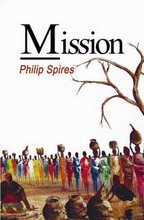This was not the last concert in the other season, but it offered a totally valedictory theme. We heard four works, presented as three because the first two were run together seamlessly and, by hearing them together, the theme that was to dominate the evening was established.
The two works that were offered as one were by Richard Wagner. We are familiar with the opinion that the Prelude from Tristan and Isolde changed music forever. Before then, unresolved chords and “confusing” harmonies had been used by composers but usually resolved to something that felt definite. Wagner’s operatic prelude, however, is a succession of unresolved chords and “confusing” harmony. The music marks time, but also stops it, making an audience listen for every detail, of which, in this sparse music, there is a wealth. To run that directly into an orchestral version of the Liebestod marked a transition. Here is Isolde, bereft and alone, is saying goodbye to life by singing a love song. And so the valedictory theme was established.
Betsy Jolas describes how when she spoke to Simon Rattle about Ces Belles Annees, he was conducting Tristan and Isolde at the time. In 2023 and already 95 years old, she thought that this work might be her last orchestral commission, so she wrote a work whose theme was the passing of years by creating variations loosely based on Happy Birthday. The orchestral writing is confused, almost disjointed, but theoretically, not harmonically. Any harmonies are merely passing, just like the passing of time it celebrates. When the soprano enters, this evening Fleur Barron dressed in party frock and bovver boots, she is in party mood and invites the audience to join with her, to come to her birthday party, to celebrate the passing of years. At 95, Betsy Jolas chose to end the work with the orchestra in a tutti of laughter, perhaps a comment on the fact that we take life and time too seriously, perhaps commenting that in the end, nothing matters, despite the conviction and sincerity of the soprano’s words of invitation.
And then, in the second half we heard perhaps the most beautiful performance of Das Lied von der Erde imaginable. This was music-making of such a high-quality, such intensity, such attention to detail that it is hard to describe. The ADDA audience were spellbound by this largely quiet music, which, despite its juxtaposition of drinking songs alongside reflection, is eventually a valediction and an invitation to contemplate eternity.
A note on the performers is essential, especially in this work, which relies for its start on the presence of a Wagnerian tenor, one who has an instrument with the power to sing Seigfried, but with the inherent ability to communicate simply and directly. Performances of Das Lied von der Erde often fall short because of the opening, when the tenor simply cannot bring it off. Not so Andrew Staples, whose voice was not only up to the task, it shone. He managed a perfect balance of power, humour, and lyricism in words that speak a lot of drinking and having a good time, but always with the underpinning idea that the experience will not last.
Andrew Staples, surely in recognition of the fact that the main act in this work is the female voice, chose to sit at the back of the first violins when not singing, rather than take a seat centre-stage. In the alto’s final farewell, he took a seat in the stalls. Perhaps he also wanted to listen to Fleur Barron’s performance, which was nothing less than exceptional. Nominally a mezzo-soprano, she coped perfectly with the soprano-alto range of this part so that nothing interrupted the flow of this beautiful music. It was a performance that was memorable, right down to the last, barely audible, “eternally”.
Last, but certainly not least, Daniel Harding’s direction
of the Swedish Radio Orchestra was both masterful and utterly transparent. He
clearly has a very special relationship with the music of Gustav Mahler and
both the detail that he brought out and the space that he created were utterly
exquisite. It was a long goodbye, but a musical experience I would repeat many
times, if time were to allow me the chance.







